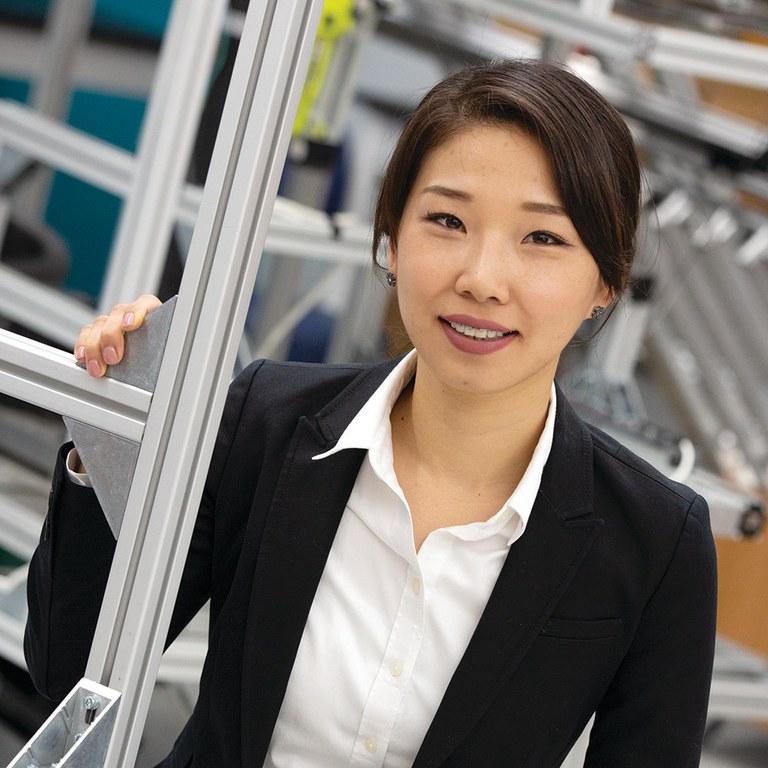Posted: October 4, 2019
Using mechatronics--a combination of electronic and mechanical engineering--Dana Choi, assistant professor of agricultural and biological engineering, addresses issues related to precision agriculture, the effort to more accurately measure and control the process of growing crops and raising livestock.
The world and technology are changing fast and agriculture has to change with it. The growing demand for good quality and quantity of food will require more skilled labor. I expect high-tech solutions, like robotics and precision agriculture, will come to the rescue of the labor shortage that is one of the challenges the United States is facing currently.
Current agricultural mechanization is more focused on large-scale grain production such as corn and soybeans. On the other hand, specialty crop production, such as fruits and vegetables, has relatively limited robotics or mechanization solutions since it requires more sophisticated technologies. My current interests are in developing "soft robotics"--robots made from highly compliant materials, similar to those found in living organisms--so that ag machinery can execute complicated tasks in specialty crop production and mimic human-like behavior.
I'm not interested in doing research for the sake of research. Instead, I meet with farmers to learn about their needs and hopes for the future; then I create technologies that can help them.
Farmers need to be able to estimate their yields early in the season so they can plan how much storage space and how many laborers they'll need, among other things. Unfortunately, it's very difficult to manually count apples on a tree. Growers in Pennsylvania have told me that their estimates are often off by 30 to 40 percent. We are using 3D cameras mounted on trucks to count apples on trees, and we will eventually create a model that will use this information to predict apple growth so we can get an even better estimate of future yield. Already our method is nearly 90 percent accurate in its apple counts.
Deeper roots are associated with higher yields of corn. One of my projects is focused on creating an automated platform for excavating corn roots and imaging them so we can better understand the environmental conditions and genetics associated with deeper roots.
Because of climate change, apple trees sometimes bloom too early in the season and then die when it gets cold again. The economic loss can be severe. To protect apple trees from frost after they have already bloomed, we are creating a sophisticated heating system that can apply the proper amounts of heat in different areas of the orchard to protect the trees.
Mushrooms are a high-value crop. They are difficult to harvest because each one matures at a different time and must be picked at precisely that time. Our ultimate goal is to create a fully automated robot that detects mushrooms at the peak of their maturity and harvests them. In the meantime, we are creating wearable glasses that can tell a user which mushrooms to pick. This will reduce the need to spend time and money training laborers.
As an undergraduate student in South Korea, I majored in mechatronics with a focus on agricultural engineering. I studied international business administration for a year in the Netherlands before going to the University of Florida for my master's and Ph.D. degrees, and joined Penn State in 2017.
There are too few women in the field of agricultural engineering. As an undergraduate I was sometimes the only female in the class. One of my goals is to support women to enter and succeed in this field.
Interview by Sara LaJeunesse, photography by Michael Houtz
Features
Fostering Forests
Across the United States, forests face unprecedented threats, and scientists in Penn State's College of Agricultural Sciences are conducting novel and complex research to conserve them.
Buzzing With Purpose
Community scientists work to protect Pennsylvania's wild bees
Conservation Reimagined
Exploring new approaches to cope with a changing climate



